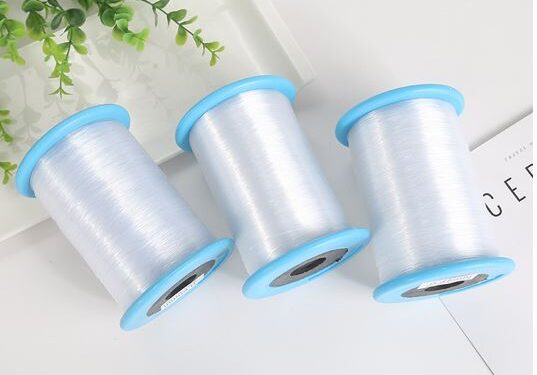When it comes to DIY jewelry, beads often get all the attention. But behind every beautiful bracelet or necklace is something equally important: the beading thread that holds it all together. Choosing the right thread can mean the difference between a piece that lasts for years and one that falls apart after a few wears.
In this guide, we’ll dive deep into what beading thread is, the different types available, how to choose the right one for your project, and essential tips to make your beadwork strong and durable.
What Is Beading Thread?
Beading thread is a specialized stringing material designed for beadwork and jewelry-making. Unlike regular sewing thread, beading thread is stronger, more flexible, and designed to withstand the friction caused by beads rubbing against it.
It comes in different materials, thicknesses, and colors, allowing you to choose the best option for your beads and design style.
Why Beading Thread Matters
When people start making jewelry, their first instinct is usually to focus on beads—the colors, shapes, and finishes that catch the eye. But the truth is, your jewelry is only as strong as what holds it together. That’s where beading thread comes in. It may not be as glamorous as a sparkling glass bead or a glow-in-the-dark charm, but it is the backbone of every successful project.
Here’s why it matters so much:
1. Durability and Strength
Beads can be made from many materials—glass, acrylic, wood, or metal—and some of them are surprisingly heavy. If the thread you choose isn’t strong enough, it may snap under pressure, leaving you with a broken bracelet or necklace. A proper beading thread is designed to handle weight, tension, and the constant friction of beads rubbing against it during everyday wear.
For example, a stretchy elastic cord might be fine for light pony beads, but if you’re stringing glass beads, you’ll need a stronger option like silk or braided nylon to make sure the jewelry lasts.
2. Flexibility and Comfort
Jewelry is meant to move with you. A stiff or inappropriate thread can make your bracelet feel rigid or cause your necklace to sit awkwardly. High-quality beading thread gives your jewelry natural movement while keeping the beads secure. This flexibility makes a huge difference when creating pieces people will actually enjoy wearing.
3. Appearance and Style
Thread isn’t always invisible. In some designs, the thread shows between beads, so its color can affect the overall look. Choosing a thread that matches your beads creates a seamless finish, while a contrasting thread can add an intentional design element. Clear monofilament can practically disappear, making it perfect for multi-colored bead patterns where you don’t want the thread to distract from the design.
4. Longevity of Your Work
Handmade jewelry takes time and creativity, so the last thing you want is for your project to fall apart after just a few wears. The right beading thread prevents fraying, knot loosening, and stretching, so your creations stay intact for months or even years. It’s the difference between a fun one-day craft and a keepsake someone treasures.
5. Professional Finish
Even if you’re a beginner, choosing the right thread can instantly make your jewelry look more polished. High-quality thread lies flat, knots securely, and complements the beads without distracting from them. This not only improves the durability of your jewelry but also makes it look like something you’d find in a boutique rather than just a casual DIY project.
Types of Beading Thread
Not all threads are created equal. Here are the most common types of beading thread used by crafters:
1. Nylon Beading Thread
- Features: Smooth, flexible, and resistant to tangling.
- Best For: General beadwork, especially with acrylic or pony beads.
- Example Brands: Nymo, S-Lon.
2. Polyester Beading Thread
- Features: Stronger than nylon, resists stretching, and often UV resistant.
- Best For: Outdoor jewelry or crafts exposed to sunlight.
3. Silk Thread
- Features: Luxurious, soft, and has a natural drape.
- Best For: Stringing pearls and delicate glass beads.
- Note: Requires knotting between beads to prevent fraying.
4. Elastic Cord
- Features: Stretchy and easy to use, doesn’t require a clasp.
- Best For: Bracelets with acrylic, pony, or glow beads.
- Drawback: May weaken over time with heavy beads.
5. Monofilament (Fishing Line Style)
- Features: Clear, strong, and nearly invisible.
- Best For: Jewelry where you don’t want thread to show.
- Note: Can be stiff, so not ideal for soft draping designs.
6. FireLine or Braided Thread
- Features: Ultra-strong, woven thread used for intricate bead weaving.
- Best For: Projects with small beads like seed or glass beads.
- Note: More expensive but highly durable.
How to Choose the Right Beading Thread
When selecting thread, keep the following factors in mind:
1. Bead Type
- Acrylic & Pony Beads: Work well with nylon or elastic thread.
- Glass Beads: Silk or braided thread for elegance and strength.
- Glow Beads: Elastic thread works best for fun, casual projects.
2. Thread Thickness
- Thin thread (0.1–0.3mm) for small beads with tiny holes.
- Medium thread (0.4–0.6mm) for general jewelry.
- Thick thread (0.7mm+) for chunky beads and bold designs.
3. Project Purpose
- Everyday Jewelry: Durable polyester or nylon thread.
- Kids’ Crafts: Elastic cord for easy wear and removal.
- Professional Jewelry: Silk or braided thread for a high-quality finish.
4. Color Coordination
Thread comes in many colors. You can:
- Match the thread color to beads for a seamless look.
- Choose contrasting thread to create a design effect.
- Use clear monofilament for multi-colored bead projects.
Tips for Working with Beading Thread
Pre-Condition Your Thread
Many crafters use beeswax or thread conditioner to reduce tangling and add strength.
Use the Right Needle
A beading needle helps thread pass smoothly through small bead holes. Choose the needle size based on your bead size.
Double Up for Strength
For heavy beads or bracelets, double your thread for added durability.
Secure Your Knots
Always tie strong finishing knots, like surgeon’s knots or square knots, to prevent unraveling. Add a dab of clear jewelry glue for extra security.
Avoid Overstretching
Elastic cords can lose their bounce if overstretched. Handle them carefully during stringing.
Common Mistakes to Avoid
- Using Regular Sewing Thread – It’s too weak for beadwork and frays easily.
- Choosing the Wrong Thickness – Thread that’s too thick won’t fit through bead holes; thread that’s too thin may snap.
- Ignoring Bead Weight – Heavy beads need stronger thread to avoid sagging or breakage.
- Skipping Knot Reinforcement – Loose knots are one of the top reasons DIY jewelry falls apart.
Beading Thread for Beginners vs. Professionals
- Beginners – Start with nylon or elastic cord. They’re easy to handle, affordable, and forgiving.
- Experienced Crafters – Explore silk for luxury projects or braided thread for bead weaving and intricate patterns.
Final Thoughts
Beads may steal the spotlight, but beading thread is the unsung hero of every jewelry project. Choosing the right thread ensures your creations are not only beautiful but also durable and wearable. From nylon and elastic cords to silk and braided options, there’s a thread for every project style and skill level.
If you’re ready to upgrade your beadwork, ZoeDIY offers a wide range of beading threads and supplies designed for both beginners and professionals. Strong, reliable, and affordable, the right thread will make your jewelry last—and shine—through everyday wear.













